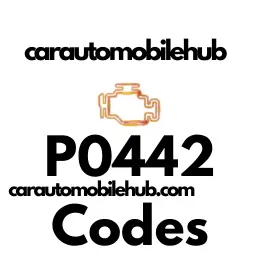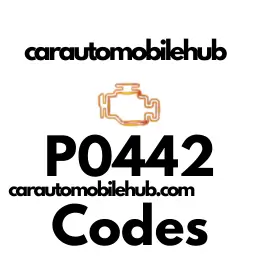The P0442 code is a diagnostic trouble code (DTC) that indicates a small leak in your vehicle’s Evaporative Emission Control System (EVAP). When your check engine light comes on and this code appears, it means the system has detected a minor leak, often caused by a loose or faulty gas cap. In this guide, we’ll explain the P0442 code, its symptoms, causes, and how to fix it, so you can address the issue quickly and efficiently.
What Does the P0442 Code Mean?
The P0442 code is triggered when the EVAP system detects a small leak, typically less than 0.020 inches in diameter. The EVAP system is designed to capture fuel vapors from the fuel tank and prevent them from escaping into the atmosphere. A leak in this system can lead to increased emissions and reduced fuel efficiency. Common causes include a loose gas cap, damaged hoses, or a faulty vent valve.

Common Symptoms of the P0442 Code
When the P0442 code is stored, you may notice one or more of the following symptoms:
- Check Engine Light: The most obvious sign is the illumination of the check engine light.
- Fuel Odor: You might smell fuel vapors near your vehicle due to the leak.
- Reduced Fuel Efficiency: A small EVAP system leak can lead to decreased gas mileage.
- Failed Emissions Test: The code can cause your vehicle to fail an emissions test.
What Causes the P0442 Code?
Several factors can trigger the P0442 code. Here are the most common causes:
1. Loose or Faulty Gas Cap
A loose, damaged, or missing gas cap is the most common cause of the code. The gas cap seals the fuel tank and prevents fuel vapors from escaping.
2. Damaged EVAP Hoses or Lines
Cracked or broken hoses in the EVAP system can cause a small leak.
3. Faulty Vent Valve or Purge Valve
The vent valve and purge valve control the flow of fuel vapors in the EVAP system. If either valve malfunctions, it can trigger the code.
4. Leaking Fuel Tank
A damaged or corroded fuel tank can also cause a small leak in the EVAP system.
5. Faulty Charcoal Canister
The charcoal canister stores fuel vapors. If it’s cracked or damaged, it can lead to a leak.

How to Diagnose and Fix the P0442 Code
Diagnosing and repairing the code requires a systematic approach. Here’s how to do it:
Step 1: Use an OBD-II Scanner
Connect an OBD-II scanner to retrieve the code and check for any additional trouble codes.
Step 2: Inspect the Gas Cap
Check the gas cap for damage or wear. Tighten it securely or replace it if necessary.
Step 3: Check the EVAP Hoses and Lines
Inspect the EVAP hoses and lines for cracks, breaks, or loose connections. Repair or replace them as needed.
Step 4: Test the Vent Valve and Purge Valve
Test the vent valve and purge valve for proper operation. Replace them if they’re faulty.
Step 5: Inspect the Fuel Tank and Charcoal Canister
Check the fuel tank and charcoal canister for damage or leaks. Replace them if necessary.
Step 6: Clear the Code and Test Drive
After making repairs, clear the P0442 code using the OBD-II scanner and take your vehicle for a test drive to ensure the issue is resolved.
Preventing the P0442 Code
To avoid the P0442 code in the future, follow these tips:
- Always tighten the gas cap securely after refueling.
- Regularly inspect the EVAP system hoses and lines for damage.
- Replace the gas cap if it shows signs of wear or damage.
- Perform routine maintenance on your vehicle’s EVAP system.
FAQs About the P0442 Code
Can I drive with the Po442 code?
Yes, you can drive with the code, but it’s best to address the issue promptly to avoid increased emissions and reduced fuel efficiency.
Is the P0442 code serious?
The P0442 code is not extremely serious, but it should be fixed to prevent increased emissions and potential fuel odor.
Can a loose gas cap cause the P0442 code?
Yes, a loose or faulty gas cap is the most common cause of the P0442 code.

